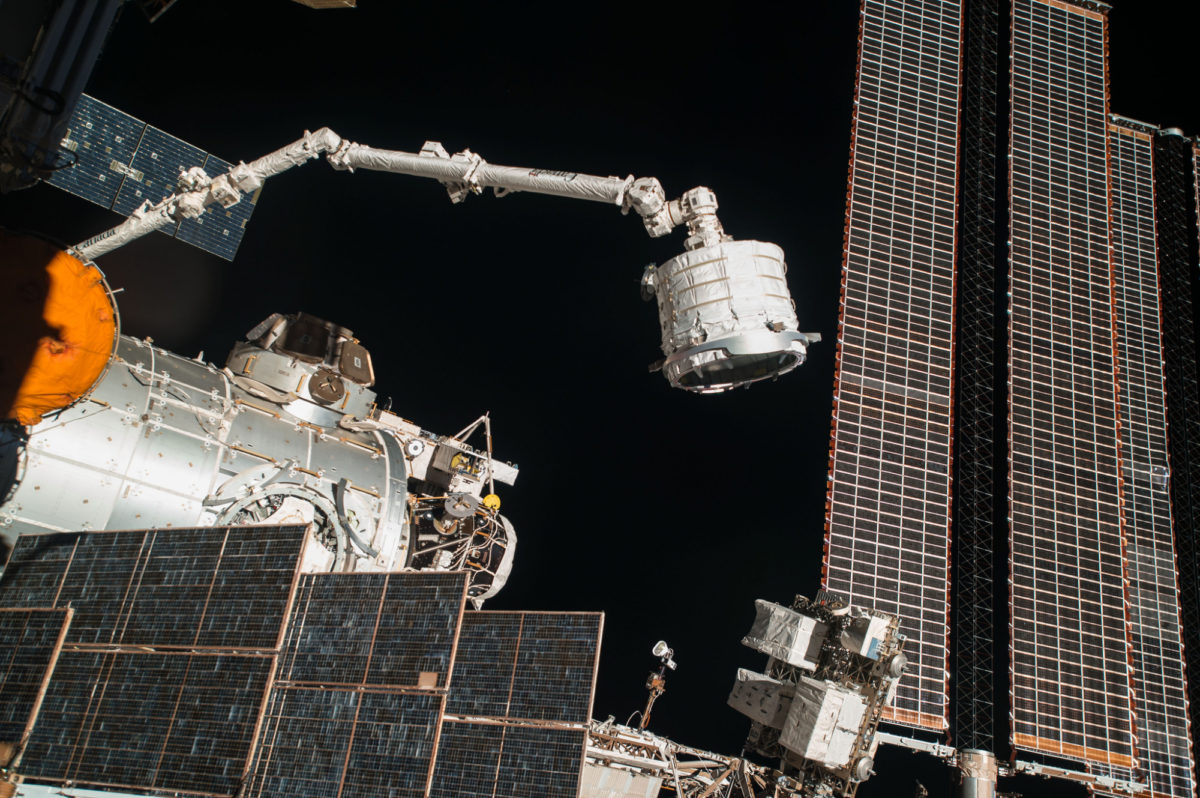Jason Davis • May 27, 2016
With retry scheduled tomorrow, NASA and Bigelow say BEAM will work—it's just a question of when
NASA will try again tomorrow to expand BEAM, the Bigelow Expandable Activity Module, a barrel-shaped room newly attached to the International Space Station's Tranquility module.
During a press teleconference with reporters this afternoon, officials from the agency and Bigelow Aerospace said they were confident the module was going to expand—it's just a question of when.
Teams monitored @BigelowSpace’s Expandable Activity Module overnight; additional expansion & lower pressure seen. pic.twitter.com/sqSb6luDzY
— NASA (@NASA) May 27, 2016
Yesterday's attempt started promisingly enough. A launch ascent valve previously exposing BEAM's interior to vaccuum closed on command. Three straps keeping the module bundled together were cut. And a bolt securing the forward and aft bulkheads was released.
Then, astronaut Jeff Williams started bleeding station air into the module. BEAM has its own set of air tanks, but NASA wanted to start with a more controlled expansion to minimize the amount of force the module imparts back into the station. BEAM's stored air supply will eventually be used at the end of the process.
The procedure is supposed to look like this: As air goes in, pressure rises. The module expands, which increases volume and decreases pressure. After Williams does that a few times, BEAM should be fully expanded, using just 10 percent of the air required for full pressurization.
But yesterday, BEAM didn't expand very much, and the pressure didn't drop the way models said it would.
"We could have gone to a higher pressure," said Jason Crusan, NASA's director of advanced exploration systems. "We chose not to go to a higher pressure, and instead go through a sequence of depressurization, and then [we'll] look at different pressurization approaches this afternoon."
Essentially, NASA and Bigelow must decide fast to introduce into the module—and, how much—to get BEAM safely unstuck.
Before launching into space, BEAM was packed in its stowed configuration for 15 months, said Bigelow Aerospace in a Facebook post. That's apparently 10 months longer than planned (due to SpaceX's loss of a Falcon 9, which threw the company's schedule into disarray). It could be that the module material—which acts a little like memory foam—is rubbing more tightly against itself than expected.
"The primary force that we believe we're working against is friction forces between the fabrics," Crusan said. "There's multiple layers of friction that could occur at the different levels of the module."

If the module doesn't expand properly tomorrow, NASA will probably depressurize it and wait a few days. On Monday, the station's robotic arm is being used to work with some nearby CubeSat hardware, and the agency doesn't want a partially expanded BEAM hanging out nearby.
In the meantime, NASA and Bigelow say the crew and station are safe. Lisa Kauke, the program manager for BEAM at Bigelow, said the models being used to regulate BEAM's pressure during expansion err on the side of caution.
"That conservatism in the model put us in a place yesterday where we were seeing that the reality of the model might not quite match up," she said.
In its Facebook posting, Bigelow said it fully expected deployment to occur one way or another. It could take NASA "a number of weeks to select the best approach to take," the statement read.
NASA seemed to agree.
"We're very confident that we will get it fully expanded out at some point in time, whether that will be tomorrow," Crusan said. "It's just understanding the forces that it takes to get it to expand, and that's what we're walking through in a very careful and measured way."
The Time is Now.
As a Planetary Defender, you’re part of our mission to decrease the risk of Earth being hit by an asteroid or comet.
Donate Today

 Explore Worlds
Explore Worlds Find Life
Find Life Defend Earth
Defend Earth

